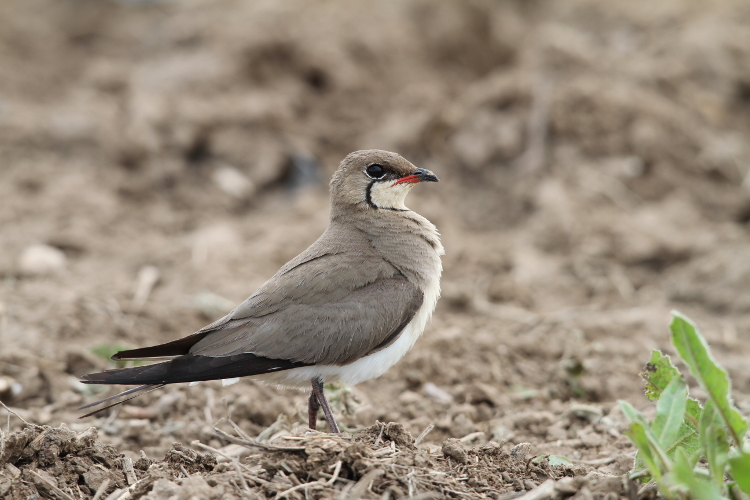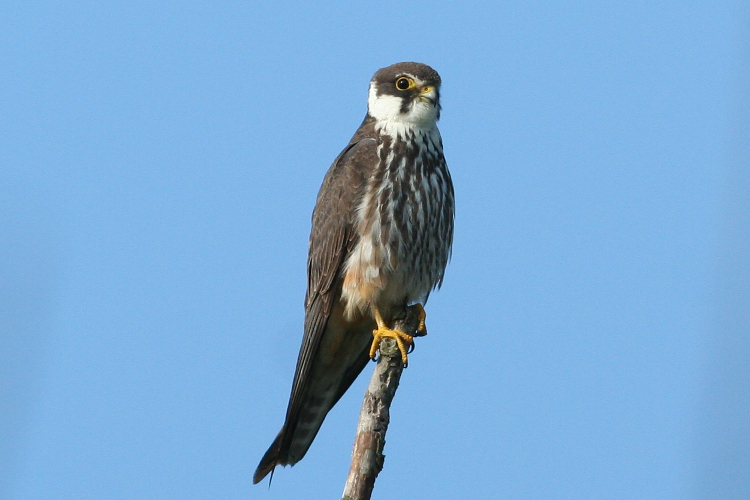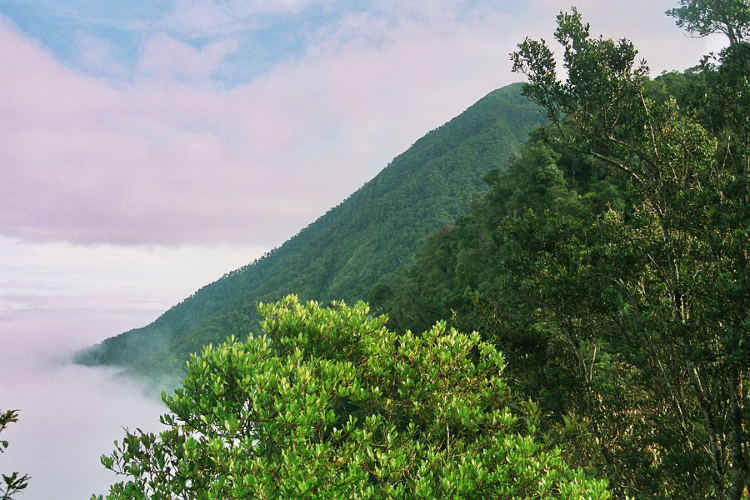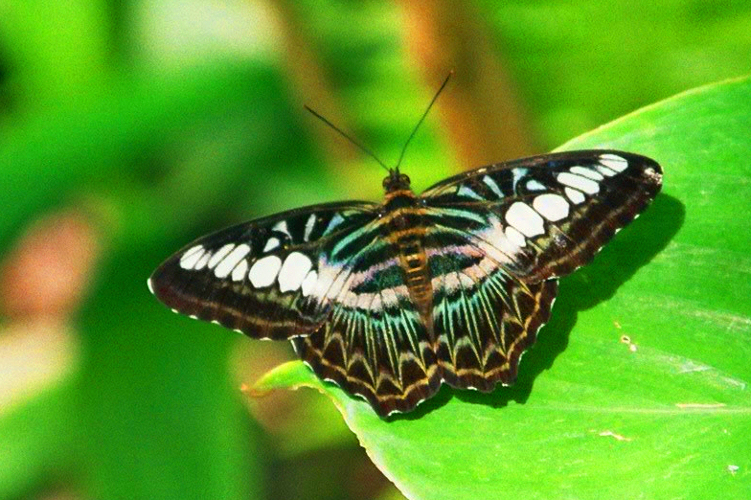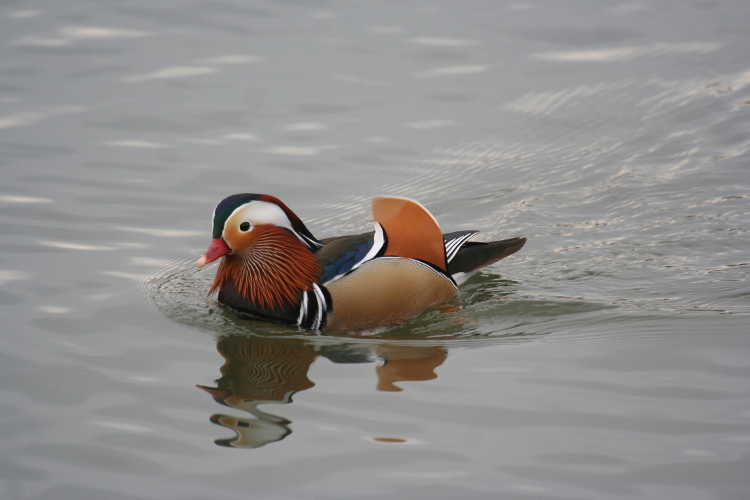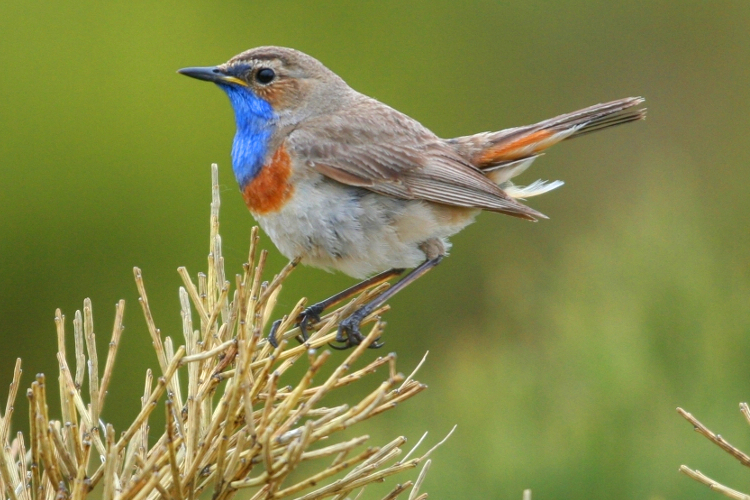LINKS



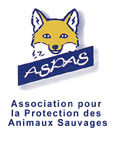

orientalbirdclub
Ayuwat Jearwattanakanok's BS
Tim Laman's WP
Festival de la photo de Montier-en-Der
National Geographic
Birds of the World
IOC World bird list
www.wikiaves.com
www.ornitho.lu
www.ornitho.ch
www.faune-grandest.org
Guislain Simard's macro-photo
jewel-beetles
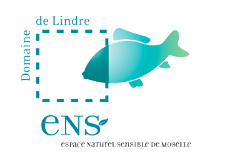




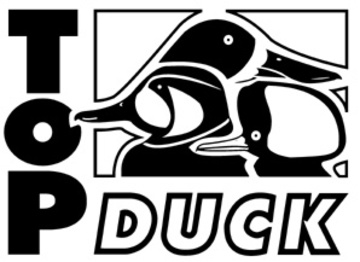
THREE FRONTIERS
Haff-Remeich
Although residing at the Grand Duchy for now a little more than fifty years, it is only since 2011 that I discovered the reserve of Haff-Remeich, located near the germano-free-Luxembourg border, not far from the small town of Schengen; it is a wetland strewn with bordered ponds roselieres, the surface of the reserve is of approximately 80 hectares; several paths leading to arranged observatories cross this reserve; the main interest of this reserve is the observation of the water birds, coots, grebes, Canada geese, egyptian geese, swan, ducks, etc cohabit with more or less of happiness.
Most species present on the close Mosel can be observed at Haff-Remeisch.
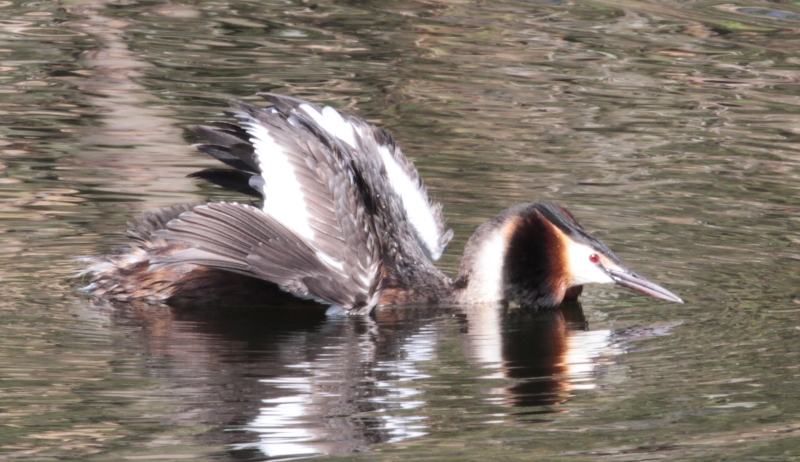
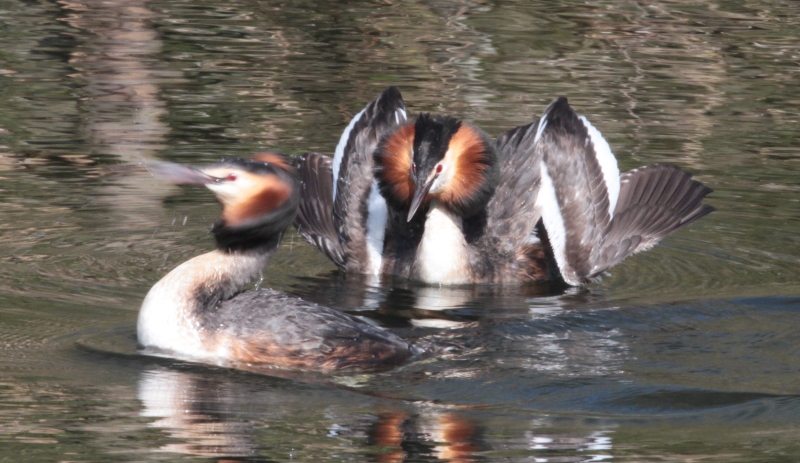
The crested grebe incontestably appears among the most appreciated species photographers in the season of the coupling, the courtship display of this bird being preceded by preliminaries comprising of the installations of aggressivity (“display cat“) or of mutual offering (“weed ceremony“).

These water birds, as much of others are victims of the aggressivity of the coots which do not hesitate to squat in their nest to make some flee the builders.
Main breeders are, with several species of ducks, the crested grebe, common coot and also the dwarf bittern; this elegant little heron is easily observable, several couples are present each year during spring and summer.
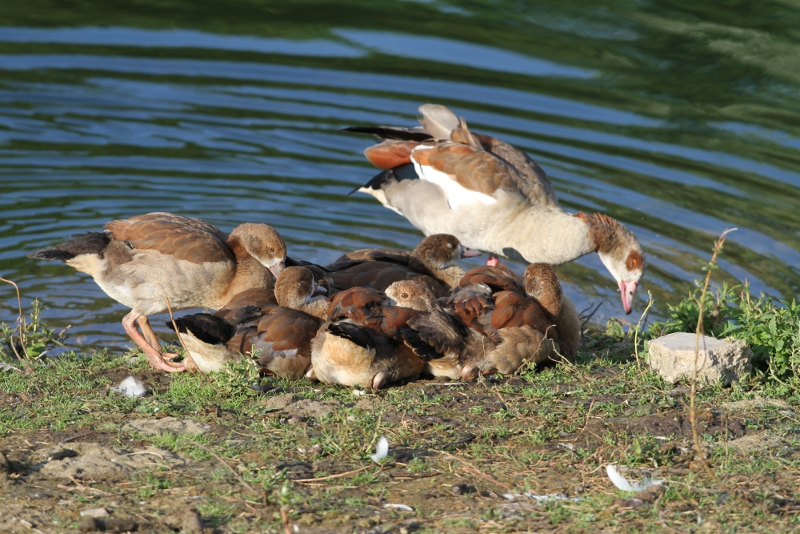
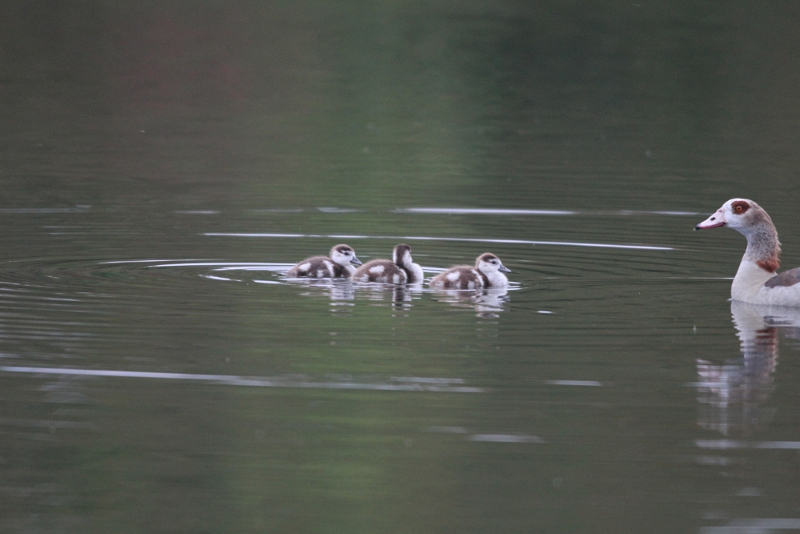
egyptian goose
The eurasian bittern is present in the reserve only during winter, generaly in small number. Although the gray heron is present and easily observable, it doesn't seems to be a breeder in the reserve.
Among other aquatic species may be found the moorhen, the water-rail (often heard but rarely seen, very discrete and elusive), sandpipers, plovers and snipe
Several raptors are visitors of the reserve, the osprey is vagrant at migration periods, the eurasian hobby is regular in summer and aurasian marsh-harrier is commonly seen flying over the ponds; at sunside and sunset the northern goshawk is frequently seen, looking after starlings mobs and go back with an individual between feet.
Main perching birds are woodpeckers (seven species: green, gray headed, great spotted, medium, little, black and the wryneck), the oriole (irregular), jay, the four trushes, several species of warblers typical of reeds and ponds as reed-warblers and Savi's warbler.
The mammals that can be meet in Haff-Remeich are the wild boar, the fox and the badger. The wild boars are sometimes fairly numerous in the reserve of which they appreciate abundance and the density of the roselières who get an excellent shelter for them to hide; by doing this, they have tendency to trample of the broods of birds and to cause not bad additional damage, while going for example to unearth the bulbs of the cultures or to attack the vines of the neighbourhoods what makes them little appreciated by surrounding peasants; eventually, their presence within the reserve can became non desirable and shooting campaigns become necessary to limit their number.
Mosel
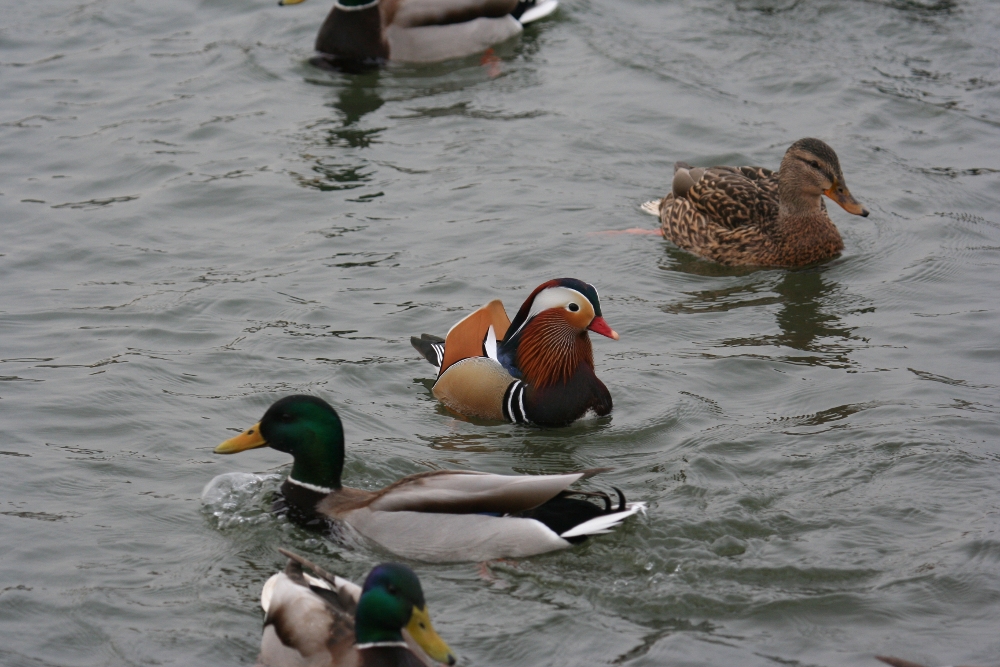
Mosel's banks on their german side are also an interesting point of view to see birds but best period remains winter and also migrating season (marsh or october) when it is possible to fall on interesting exotics like bar-headed goose; graylag goose are also numerous along Mosel but curiously there birds are not present at the very close Haff-Remeich reserve.
Greylag goose are constantly encoutered on banks in the town of Remish under the bridge where tourists enjoy to feed them; other water-birds present are swans, canadian and egyptian geese, tufted ducks, mallards, pochards, shags and so on.

Another stricking water-bird present (generally in small number) in winter is the smew, an unusual little duck which looks like a gull from far, but close to mergansers. Thickets of the neighbourhoods are a favorite place for groups of fieldfares; these birds have a striking coloration which make these birds really ace of the camouflage.
Neighbourhoods doesn't always provide very aesthetic landscapes especially by going to the south of Saarland, however some good points remains available especially the Ökosee (on north of Saarlouis) os some small islets of dead water-points of Saar river. But it is mostly near Mosel (and preferebly in winter) that can be found best point of interests, especially because of presence of many water-points near Besch or Nennig. End of autumn is generally a good period to find isolated individuals of loons.
Neighbouring fieds on french side (by going to Montenach or Malbrouck castle) and on german side (by going up to Trier and Bitburg) provides also good points of observation for the red kite and some passerine such as stonechat or tawny pipit.
These fields are also a good place to observe eurasian dotterels while they make an halt during migration (at beginning of spring and end of summer). As they stay on soil (they favour especially rejects of colza) generally by little groups, these nice little birds remains easily overlooked or difficult to find, his coloration making an excellent camouflage on ground. But if the photographer remains prudent, they may become fairly tame or even curious (I have a such personnal experience). Other interesting species to observe are several corvidae, various buntings and honey-buzzard (especially at the end of summer).
Montenach
Montenach, with its “seven hills” has a classified wooded area 117eme books French with a teaching course for the many species of plants and flowers present in this zone;recently, a visitors centre was built there.
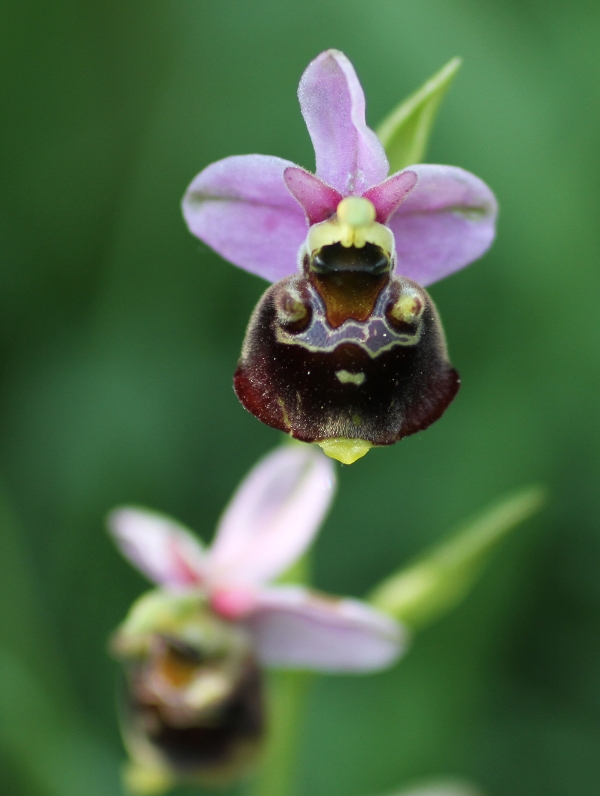
Montenach is more famous for its flora than for its fauna, there are few big animals apart deers and wild boars, generally present around the reserve; however, birds are numerous, especially passerines and woodpeckers but also some raptors (buzzard, kites, noney-buzzard, sparrowhawk, goshawk...) .There is no infrastructure for birwatching here.
Another speciality of the site is the salamander, which appreciates the small waterway of Kremberg which crosses the reserve like place of laying; by reaching the top of the course, the visitor can see the larvae swimming peacefully in the puddle pools and the recesses of the little stream. The adult salamanders are mainly active of night but one can also meet them day in very wet weather.
The reserve of Montenach is famous for its plant varieties and floral especially the orchids like bumblebee ophrys that the hiker can admire from the end of april to beginning of june; but botanical richness often implies entomologic richness, a real treasure for fan of macro-photo of which I'm, the occasions do not fail to explore Microcosmos which conceals an abundance of species and unbounded varieties.
Among most fscinating insects can be found heteropterae, communly called 'bugs' and reputed for their bad odor; the economic importance of these insects can be less or more neglected and may vary goodly or badly according the the specy; for exemple, the food habits of bug pentatoma rufipes is mostly vegetarian and this specy is likely to be considered as a nuisance for certain plants.
In another hand, the spiny shieldbug picromerus bidens appreciates to attack other insects, larvae or caterpillars by sucking content of the body with his horn
Among other insects, it is possible to find dragonflies, bees, wasps (hymenopterae) butterflies and numerous beetles of which the meloe (a parasite of bees), several longhorn beetles species of which the great capricorn (one of the largest beetle in Europe), pied-strangalia and the unelegant lamia textor, often found near poplars and known as a serious pest for wicker's plantations; on the last path which leads to the exit of the reserve, the staphylinidae beetle ocypus olens is frequently seen especially around september period; it is a sharp and aggressive insect who feeds mainly on snails and slugs. Also many leaf-beetles and weevils are present in the reserve, of which several pests such as the colorado beetle (well known plague of potatoes imported from America), and also the more inoffensive and brilliant oreina menthastri easily found around september period on wild minth leaves bordering paths. Montenach's reserve is crossed by a main trail (the "orchids trail") which circumvents the major part of the zone;it is expressely required to do not quit this path, as many unscrupulous visitors who manages to trample the flowers
